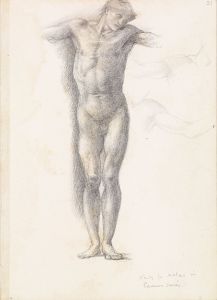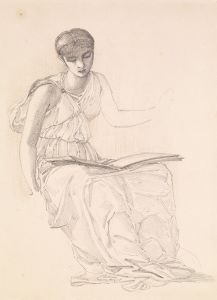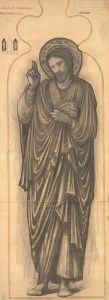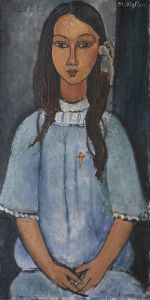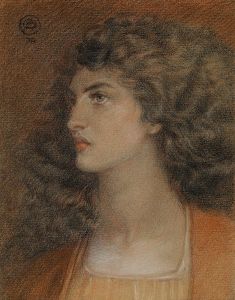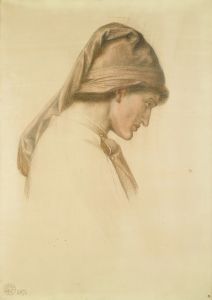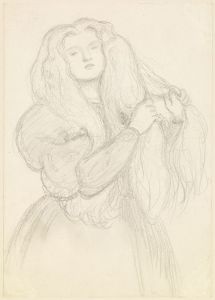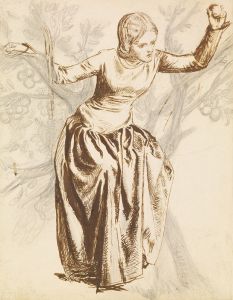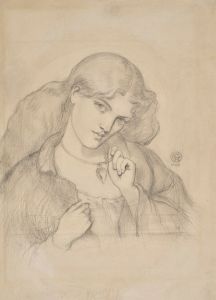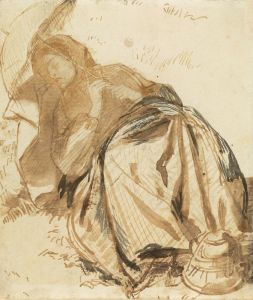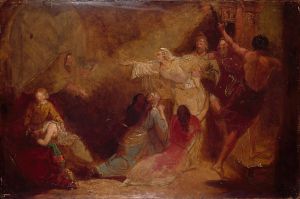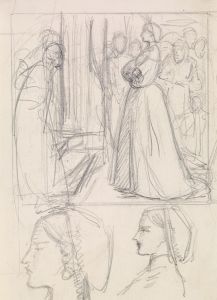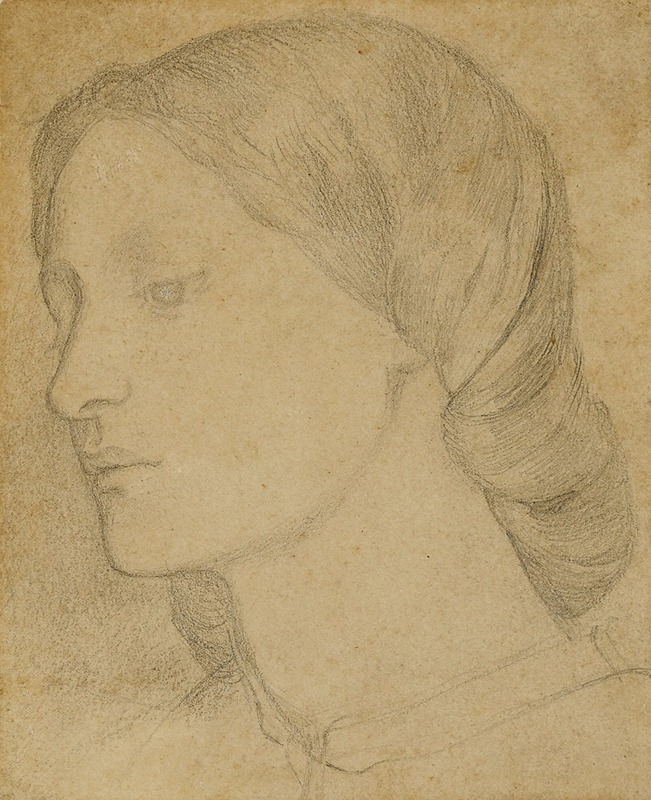
Elizabeth Siddal
A hand-painted replica of Dante Gabriel Rossetti’s masterpiece Elizabeth Siddal, meticulously crafted by professional artists to capture the true essence of the original. Each piece is created with museum-quality canvas and rare mineral pigments, carefully painted by experienced artists with delicate brushstrokes and rich, layered colors to perfectly recreate the texture of the original artwork. Unlike machine-printed reproductions, this hand-painted version brings the painting to life, infused with the artist’s emotions and skill in every stroke. Whether for personal collection or home decoration, it instantly elevates the artistic atmosphere of any space.
Dante Gabriel Rossetti's painting "Elizabeth Siddal" is a notable work that reflects both the artistic and personal relationship between the artist and his muse, Elizabeth Siddal. Rossetti, a founding member of the Pre-Raphaelite Brotherhood, was known for his vivid and detailed depictions of medieval themes, romantic subjects, and his use of vibrant colors. Elizabeth Siddal, who was both a model and an artist in her own right, became one of the most prominent figures associated with the Pre-Raphaelite movement.
The painting "Elizabeth Siddal" is one of several portraits Rossetti created of Siddal, capturing her distinctive features with a focus on her long, flowing red hair and ethereal beauty. These portraits are characterized by their attention to detail and the idealized portrayal of Siddal, which was typical of Rossetti's style. The artist's fascination with Siddal is evident in the numerous sketches and paintings he produced of her, which often depict her in various guises, from historical and literary figures to more personal and intimate portrayals.
Rossetti and Siddal's relationship was both professional and personal. Siddal began modeling for the Pre-Raphaelites in the early 1850s and quickly became Rossetti's primary muse. Their relationship evolved into a romantic one, and they eventually married in 1860. Siddal's influence on Rossetti's work was profound, and she inspired many of his most famous paintings. In addition to modeling, Siddal was also an accomplished artist and poet, and Rossetti encouraged her artistic pursuits.
The painting "Elizabeth Siddal" is emblematic of the Pre-Raphaelite style, which sought to return to the detail, intense colors, and complex compositions of Quattrocento Italian art. This movement was a reaction against the academic art standards of the time, emphasizing a more naturalistic approach and a focus on themes of beauty, love, and nature. Rossetti's work, including his portraits of Siddal, often incorporated these elements, creating a dreamlike and romantic atmosphere.
Elizabeth Siddal's own contributions to the arts should not be overlooked. Although she is often remembered primarily as Rossetti's muse, she was a talented artist and poet. Her work was exhibited alongside other Pre-Raphaelites, and she was one of the few women to gain recognition in the male-dominated art world of the 19th century. Her poetry, which often explored themes of love, loss, and longing, provides insight into her personal experiences and emotions.
Tragically, Siddal's life was cut short when she died in 1862 at the age of 32, likely due to an overdose of laudanum. Her death had a profound impact on Rossetti, who was devastated by the loss. In a gesture of deep mourning and tribute, Rossetti famously buried a manuscript of his poems with her, although he later had them exhumed for publication.
The legacy of "Elizabeth Siddal" by Dante Gabriel Rossetti endures as a testament to the complex interplay of art, love, and tragedy. The painting not only captures the beauty and spirit of Siddal but also serves as a reflection of the broader themes and ideals of the Pre-Raphaelite Brotherhood. Through this work, Rossetti immortalized Siddal, ensuring that her image and influence would continue to resonate in the world of art.





